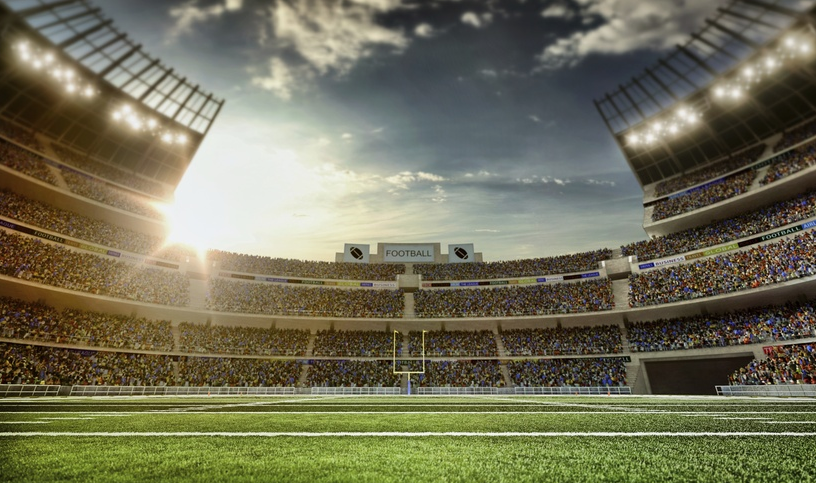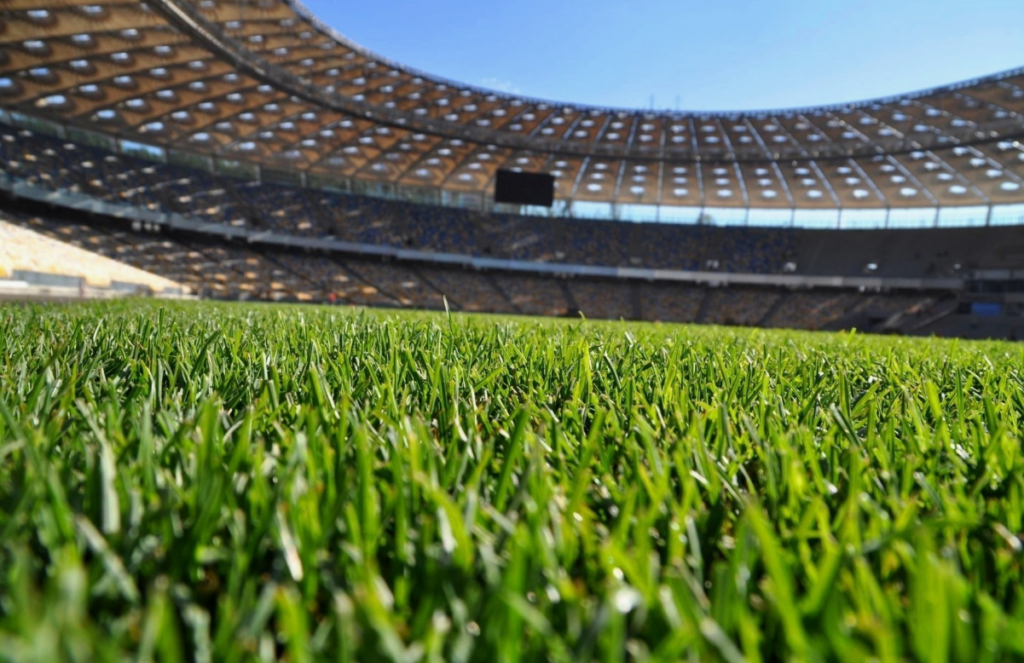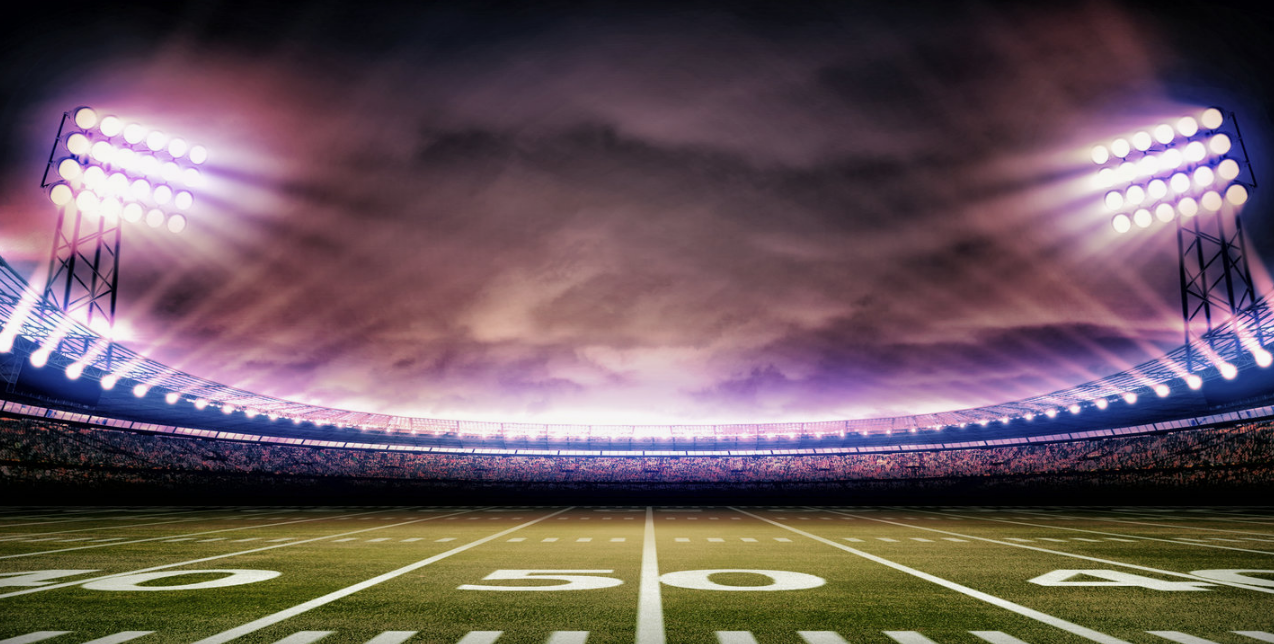A soccer field is typically larger than a football field, with different dimensions and markings. The size variations cater to the specific rules and gameplay of each sport. Soccer, known as football in many parts of the world, is played on a larger field compared to American football. The soccer field dimensions are around 100-110 meters in length and 64-75 meters in width, while a football field is 120 yards long and 53.
3 yards wide. The differences in size are designed to accommodate the gameplay requirements of each sport. Soccer’s emphasis on continuous play and skillful ball control benefits from a larger field, while American football’s focus on strategic plays benefits from a more compact playing surface. Both fields serve their respective sports effectively, providing the necessary space for players to showcase their skills and tactics.
Football Field vs Soccer Field

Size and Dimensions- Football Field vs Soccer Field
The size and dimensions of a football field and a soccer field differ in several ways. A soccer field is larger than a football field, with dimensions of approximately 100-130 yards long and 50-100 yards wide, while a football field measures 120 yards long and 53.
3 yards wide.
Football Field- Football Field vs Soccer Field
In American football, the field measures 120 yards in length and 53.3 yards in width. The end zones are 10 yards deep, making the total length 130 yards.
Soccer Field
On the other hand, a soccer field is rectangular and typically ranges from 100 to 130 yards in length and 50 to 100 yards in width. The standard FIFA pitch size is 110-120 yards long and 70-80 yards wide.
Playing Surface Fifa Soccer Field Dimensions
The dimensions of a FIFA soccer field differ slightly from a football field, with a soccer field typically larger. FIFA fields measure 100-110 meters in length and 64-75 meters in width, while football fields are 100 yards long and 53 1/3 yards wide.
The distinctions ensure unique gameplay experiences for each sport.
Grass Or Turf
One of the most significant differences between football and soccer fields is the playing surface. While football fields are generally made of natural grass, soccer fields can be either natural grass or artificial turf. Natural grass is the preferred surface for most soccer players because it provides a better playing experience. It is softer, more comfortable to run on, and absorbs shock better than artificial turf. On the other hand, artificial turf is more durable, requires less maintenance, and can be played on in any weather conditions.
Artificial Turf Usage
Artificial turf has become increasingly popular in recent years, especially in areas where natural grass is difficult to grow or maintain. In addition, many soccer teams prefer to play on artificial turf because it is more consistent and provides a more predictable playing surface. However, there are also concerns about the safety of playing on artificial turf. The surface can become very hot in warm weather, which can cause burns and other injuries. In addition, some studies have suggested that playing on artificial turf may increase the risk of certain types of injuries, such as ACL tears. In conclusion, while the choice of playing surface is largely a matter of personal preference, it is essential to consider the pros and cons of both natural grass and artificial turf before making a decision. Ultimately, the most important thing is to ensure that the playing surface is safe and provides a good playing experience for all players.
Goalposts and Nets
In the realm of sports, goalposts, and nets play a vital role in determining the outcome of the game. Let’s delve into the distinctive features of goalposts and nets on a football field and a soccer field.
Football Field
On a football field, the goalposts are positioned at each end of the field. They consist of two vertical posts connected by a crossbar. The net is attached behind the posts to catch the ball when a goal is scored.
Soccer Field
Conversely, on a soccer field, the goalposts are also located at each end but are distinct in shape. They are typically H-shaped with a crossbar and uprights. The net is attached to the back of the goal frame to prevent the ball from going beyond the goal line.

Soccer Field vs. football Field Overlay
When comparing soccer fields and football fields, it’s important to understand the differences between the two. Both fields serve as the battlegrounds for two of the most popular sports in the world, and each has its unique dimensions and characteristics. Here, we’ll delve into the specifics of each, comparing the layout and features of soccer fields and football fields to gain a better understanding of their differences.
Football Field
The football field, commonly known as the gridiron, is rectangular and measures 120 yards in length and 53.3 yards in width. The field is marked with yard lines and goal lines at each end. There are also hash marks that indicate each yard line, facilitating precise ball placement during the game.
Soccer Field
The soccer field, also known as a football pitch, is typically larger than a football field. It is rectangular in shape and measures between 100 and 130 yards in length and 50 to 100 yards in width. The field is marked with lines that define the boundaries and areas such as the penalty area, goal area, and center circle.
Game Duration
Understanding the game duration for football and soccer is essential for both players and fans. The time allocated for each game can greatly impact the strategies and intensity of play. Let’s delve into the game duration for both football and soccer to comprehend the contrasting dynamics.
Football
Football, also known as American football, typically consists of four quarters, each lasting 15 minutes. However, due to various stoppages in play, the total game duration often exceeds three hours. The actual playing time in a football game is approximately 11 minutes, making it a high-intensity sport with frequent breaks for strategic planning and set plays.
Soccer
In contrast, soccer, known as football in many countries, is played in two halves, each lasting 45 minutes, totaling 90 minutes of continuous play. While there is some additional time added at the end of each half for stoppages, the overall game duration remains significantly shorter compared to football. The continuous nature of soccer demands enduring stamina and relentless effort from the players throughout the match.
Player Positions
The player positions on a football field and a soccer field differ significantly. In football, the positions are quarterback, running back, and wide receiver, while in soccer, they include forward, midfielder, and defender. The layout and dimensions of the fields also impact the positioning and playing style of the players.
Football
In American football, there are various player positions, each with specific roles and responsibilities. The positions include quarterbacks, running backs, wide receivers, tight ends, offensive linemen, defensive linemen, linebackers, cornerbacks, safeties, and special team players.
Soccer
On a soccer field, players also have distinct positions that contribute to the team’s strategy and gameplay. The positions consist of goalkeepers, defenders, midfielders, and forwards, each with unique tasks and areas of the field to cover.
Strategic Differences
When it comes to strategic differences between football and soccer, the field dimensions play a crucial role in shaping the gameplay tactics and strategies. Let’s delve into the specific strategic variances between the two sports.
Football
In football, the field is rectangular, typically measuring 120 yards long and 53.3 yards wide, with end zones extending the total length to 160 yards. The goalposts are positioned at the back of the end zone, influencing strategic kicking and passing plays. The larger field dimensions allow for diverse offensive and defensive formations, fostering strategic gameplay.
Soccer
On the other hand, soccer fields are more compact, with FIFA soccer field dimensions ranging from 100-130 yards long and 50-100 yards wide. The smaller field size promotes quick transitions and close ball control, shaping the strategic emphasis on agile movements, precise passing, and continuous play flow.
Global Popularity
Football and soccer are two of the most popular sports globally, each with a massive following and a rich history.

Football
Football, also known as soccer in some regions, boasts an immense fan base worldwide.
- It is played in over 200 countries, making it a truly global sport.
- The FIFA World Cup, held every four years, attracts billions of viewers and showcases top talent.
Soccer
Soccer is a sport that unites people across continents and cultures.
- It is the most popular sport in the world, with passionate fans from all walks of life.
- The UEFA Champions League is a prestigious competition that captivates audiences globally.
Conclusion
The differences between football and soccer fields are clear in terms of size, markings, and playing style. Understanding these distinctions is crucial for players and fans alike. Whether it’s the gridiron of American football or the pitch of soccer, each field has its unique characteristics that contribute to the excitement of the game.

